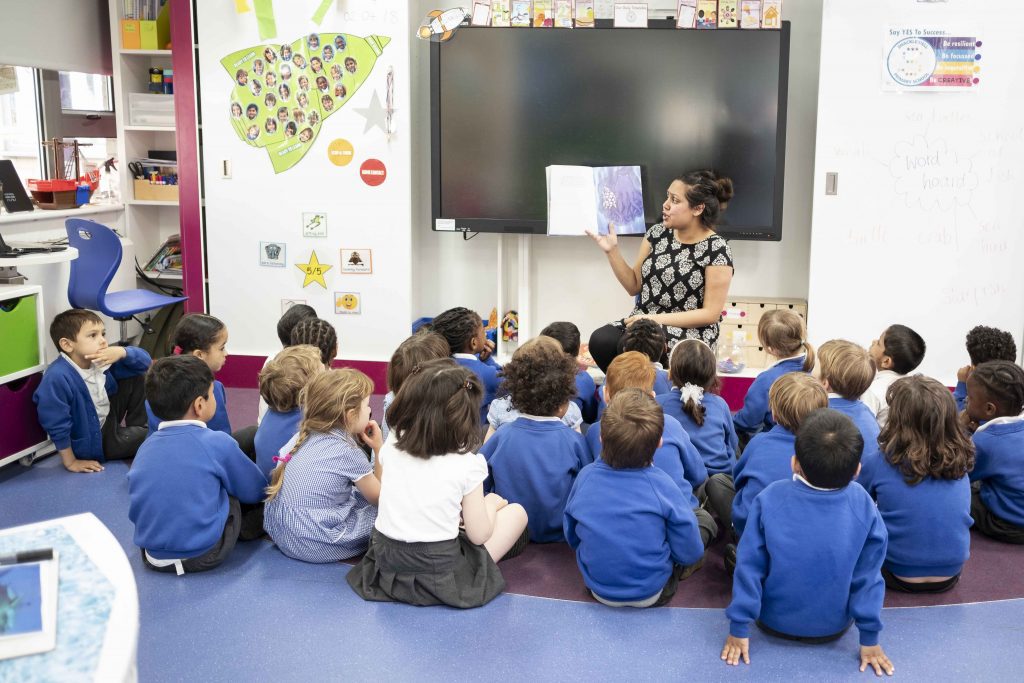By Nicola Grove, Honorary Senior Lecturer at University of Kent and Sarah Barnett, Independent Speech and Language Therapist in Somerset
We express our ideas to each other through speech. It’s a complex process that takes time. Children develop their ability to articulate sounds and coordinate sequences of sounds into longer words until they are over five. During this time, it is vital not to make children feel self-conscious or worried about their speech; this may discourage them from talking and sharing their ideas and may even cause stuttering.
Sound progress
90% of children master:
- m, p, b, d, t, k, g, w, l, y, f, v, s, z, ch, h by 4
- sh, j by 5
- r by 6 years 5 months (many adults continue to pronounce r as w)
- th by 7 years 6 months.
Trickier sounds to pronounce
- sh: the tongue has the blade up and the sides down so that air escapes laterally
- ng: the back of the tongue is raised against the back of the palate in the same position as the sound g, but in fact there is only one movement
- th: the tongue tip slides between the teeth
- j involves coordinating d with ge (as in genre)
- ch involves coordinating t with sh.
Normal speech development
ALL children sometimes misunderstand what is said to them, utter oddly worded sentences, and put speech sounds and syllables in the wrong spots (or omit them) when they are learning to talk. It is part of the normal pattern of development for a child to:
- say a sound in isolation, but not within words
- say a sound in one position, but not in another, sh in fish, but not in shoe
- say a sound in some words, but not others: c in car, but not in key
- say th for s in sit (thit – showing he or she can say th) but, fing for thing
- say s in sea, but tar instead of star.
Children find it easier to produce sounds in isolation than in words. Their production of sounds within consonant clusters and long multi-syllable words takes longer to develop, emerging gradually.
By four, a child’s spontaneous speech should be intelligible to unfamiliar adults, even though some articulation and phonological differences are likely to be present.
When should you worry?
Your SENCO should refer a child for a hearing test and/or speech and language therapy if:
- a child can’t hear voiceless sounds: p, t, c, f, s, ch, th
- a child can’t hear sounds they can’t see pronounced on our lips: k, s, h, sh, ch
- a child has difficulty making him/herself understood by a person meeting them for the first time
- a child has persistent difficulty in producing several speech sounds (expected for their age)
- a child has persistent hoarseness
- a child is disinterested in communicating
- a child is stuttering.
What should you do?
- Find out which sounds the child has difficulty in pronouncing in isolation and within words
- Note when she or he begins to use the sounds in everyday chatter
- Play sound games for fun and to develop listening and discrimination (see links below).
What shouldn’t you do?
- Don’t ask the child to repeat or pronounce sounds that you know he or she cannot manage
- Don’t draw attention to the child’s difficulties.
Useful websites
Spotting hearing losses: https://www.hear-it.org/10-signs-that-your-child-may-have-a-hearing-loss
Phonological awareness: https://www.understood.org/en/school-learning/learning-at-home/encouraging-reading-writing/9-ways-to-build-phonological-awareness-in-pre-k-and-kindergarten
Guide to intelligibility in young children: https://speech-language-therapy.com/index.php?option=com_content&view=article&id=29:admin&catid=11:admin&Itemid=117
Understanding language development and language difficulties: http://www.talkingpoint.org.uk

